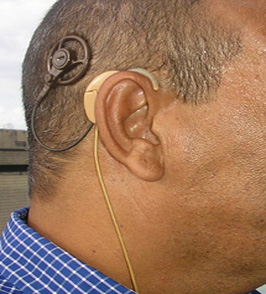When one hears that a person is deaf, the first thing that comes to mind is something wrong in the ear. Perhaps they are correct; however, the problem is that there isn’t always a clear distinction between a deaf person and a Deaf Person.
The first phrase refers to a medical perspective, this is to say, a person with an audible problem that should be repaired. The latter is a subtle concept more related to linguistics.
Every language (oral or visual-gestural) describes a reality that makes a culture. That is why, Spanish from Spain has a different term for every part of the wheel of a carriage, whereas Arabic from Morocco does not, because in Morocco the same carriage weren’t used as in ancient Spain.
Deaf identity is an ancient concept that is once again taking importance due to the global movement that aims to give relevance to minorities. A person with a deaf identity (and therefore considered a Deaf Person) is someone who uses sign language as his primary language, who lives in community with other deaf people and who knows the culture that embodies sign language. This does not imply that he does not hear; the son or daughter of a deaf couple may be able to hear and in addition, by having a deaf identity can also be a Deaf Person. (Written with capital letters to differentiate him from a “deaf person”from the medical perspective.)















